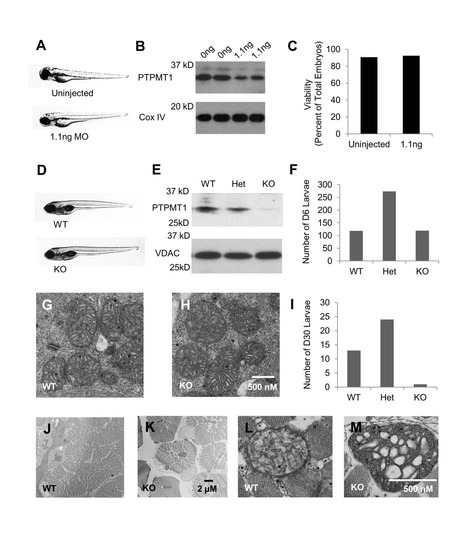- Title
-
PTPMT1 Inhibition Lowers Glucose through Succinate Dehydrogenase Phosphorylation
- Authors
- Nath, A.K., Ryu, J.H., Jin, Y.N., Roberts, L.D., Dejam, A., Gerszten, R.E., Peterson, R.T.
- Source
- Full text @ Cell Rep.
|
In Vivo Chemical Screen for Modifiers of Glucose Levels Identifies Alexidine as a Glucose-Lowering Agent (A) Measurement of glucose levels in larval zebrafish after treatment with known hyper- and hypoglycemic agents (n = 3). (B) S-score (log ratio of the fold change in glucose levels) ranking of the glucose-lowering ability of compounds in the Prestwick library. Alexidine’s score is depicted in red, and its chemical structure is shown on the graph. (C) Alexidine dose-response curve (n = 5). (D–G) Bright-field (D and E) and fluorescent (F and G) images of wild-type livers (D and F) and ablated livers (E and G). (H) Glucose measurements in larvae with wild-type livers versus ablated livers. (I) Glucose measurements in alexidine-treated larvae with ablated livers (n = 3). (J–M) Bright-field (J and K) and fluorescent (L and M) images of wild-type (J and L) β cells and ablated β cells (K and M). (N) Glucose measurements in larvae with wild-type β cells versus ablated β cells. (O) Glucose measurements in alexidine-treated larvae with ablated β cells (n = 3). Data are presented as mean ± SEM. p < 0.01. See also Figure S1. |
|
Zebrafish Developmental Morphology and Mitochondrial Membrane Potential Remain Intact After Alexidine Treatment. Related to Figure 1. |
|
Morpholino Oligonucleotide Knockdown of ptpmt1 and Generation of ptpmt1 Knockout Zebrafish. Related to Figure 2. PHENOTYPE:
|



